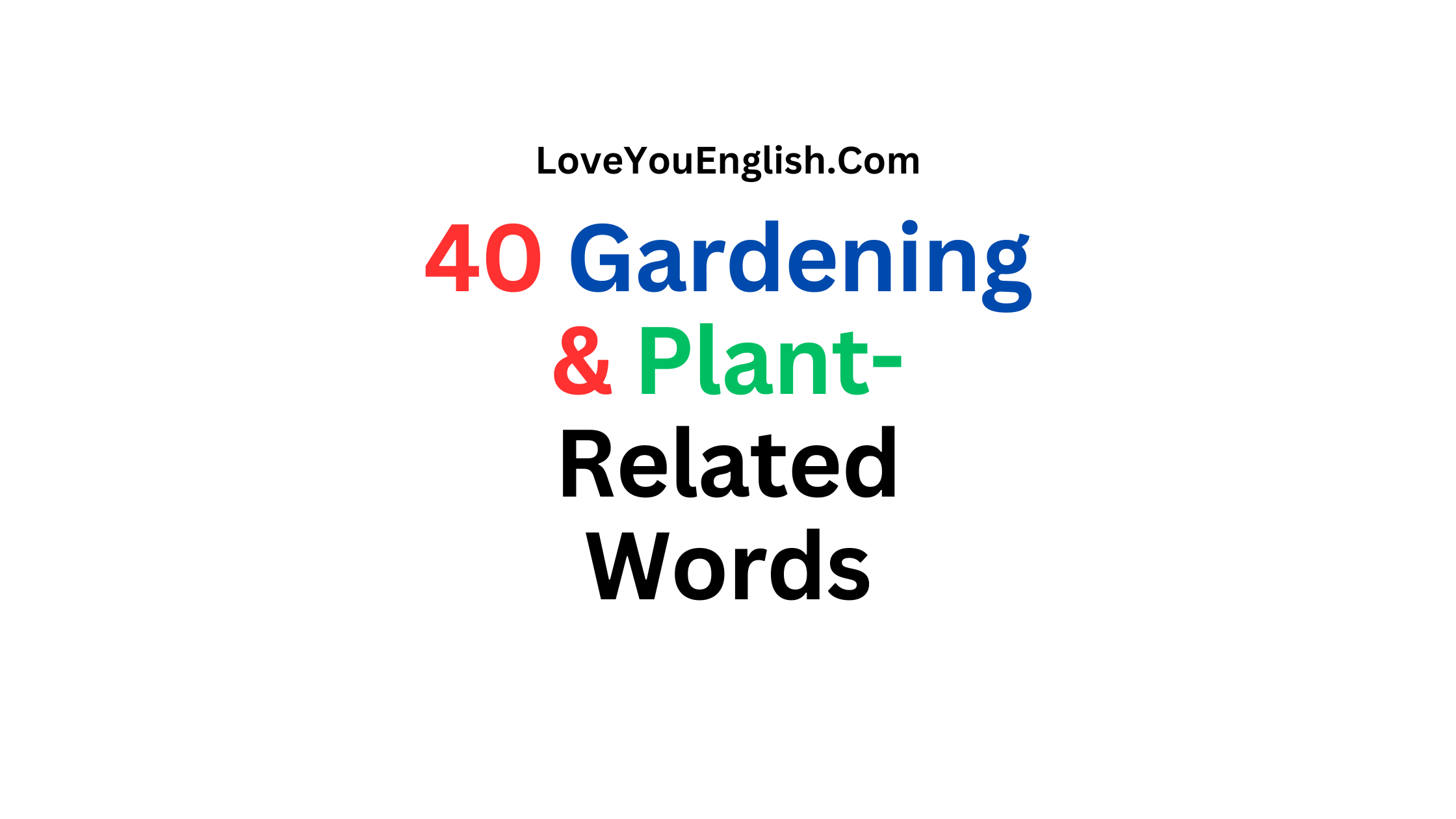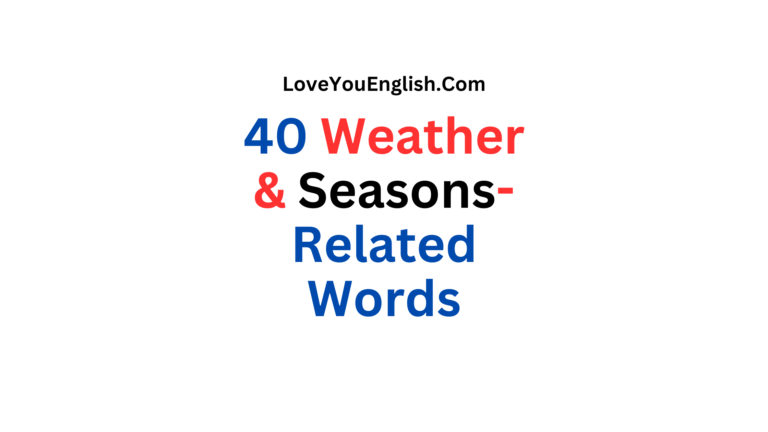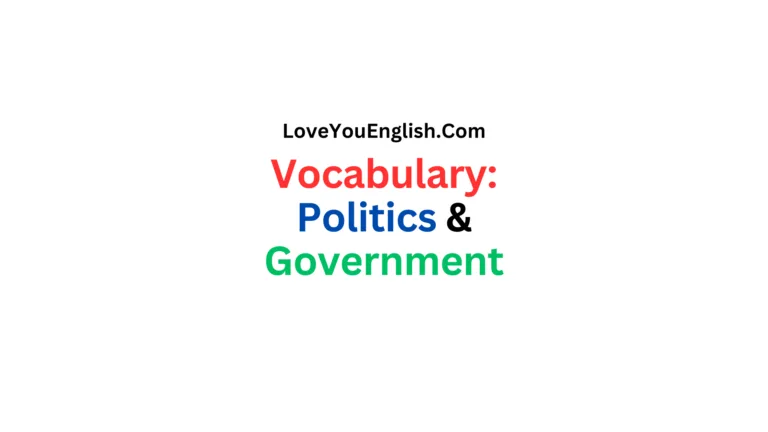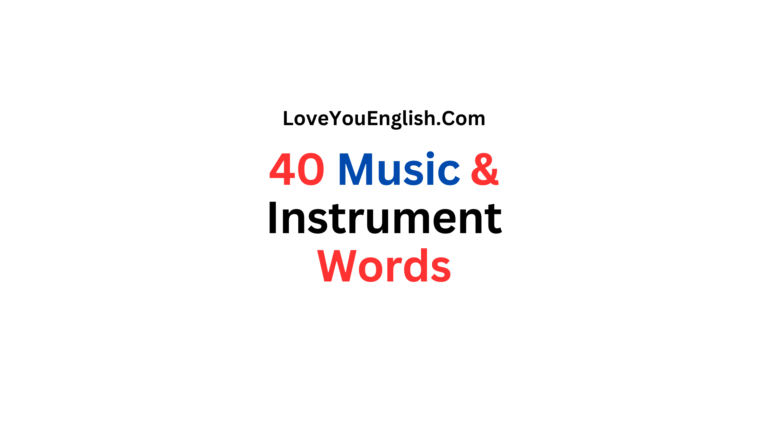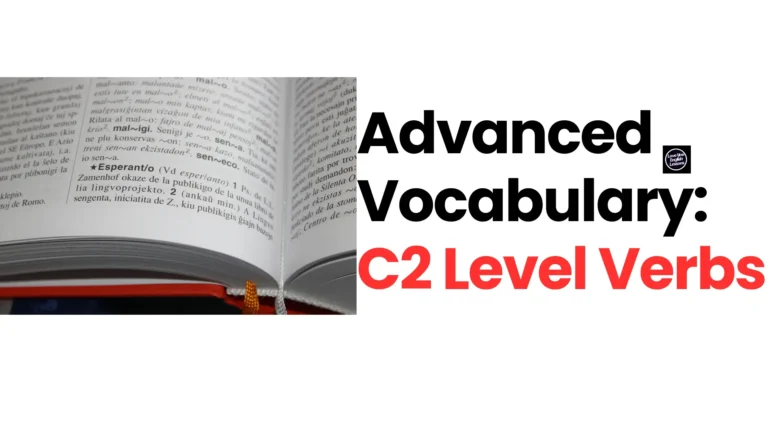English Vocabulary: 40 Gardening & Plant-Related Words
English Vocabulary: 40 Gardening & Plant-Related Words
Hello everyone,
Today we explore the world of green thumbs and beautiful gardens! 🌿
Whether you’re a pro gardener or just starting out with a single potted plant on your windowsill, learning the language of gardening can make your experience even more fun.
In this lesson, we’ll look at 40 important gardening and plant-related words and what they mean.
From the basics of soil types to the details of plant anatomy, these words will help you navigate your gardening adventures with confidence.
So, grab your gloves, and a cup of tea, and let’s dive into the amazing world of plants and gardening!
Happy gardening! 🌻
Here’s a list of 40 gardening and plant-related words along with their meanings.
1. Aloe Vera
A succulent plant with thick, fleshy leaves. It’s known for its soothing gel used for skin care.
2. Annual
A plant that completes its life cycle in one year, from germination to flowering to seed production.
3. Perennial
A plant that lives for more than two years, often coming back each season.
4. Compost
Decomposed organic matter used to enrich the soil and help plants grow.
5. Fertilizer
A substance added to soil or plants to provide essential nutrients for growth.
6. Mulch
Material spread over the soil surface to retain moisture, suppress weeds, and improve soil quality.
7. Hydrangea
A popular shrub with large, colorful flower clusters that can change color based on soil pH.
8. Pruning
The process of trimming and cutting back parts of a plant to promote healthy growth and shape.
9. Seedling
A young plant that has just sprouted from a seed and is in the early stages of growth.
Read more:
- 40 Words Related to Holidays and Celebrations,
- Useful Power Words to Increase Conversions
- Between vs. Among: What’s the Difference?
- 10 Advanced English Verbs to Level Up Your Vocabulary
- Mastering Advanced English Verbs: 10 Powerful Verbs
- 30 Descriptive Words in English Explained Simply
10. Germination
The process by which a seed develops into a new plant.
11. Potted Plant
A plant grown in a container, which can be moved around easily.
12. Potting Mix
A specially formulated soil mixture used for planting in containers.
13. Soil pH
A measure of how acidic or alkaline the soil is, which affects plant health.
14. Greenhouse
A structure with transparent walls and roof for growing plants in a controlled environment.
15. Succulent
Plants with thick, fleshy tissues designed to store water.
16. Trellis
A framework or lattice used to support climbing plants.
17. Mulching
The act of applying mulch to the soil to improve plant health.
18. Deadheading
The process of removing spent flowers from a plant to encourage new blooms.
19. Propagation
The process of growing new plants from seeds, cuttings, or other plant parts.
20. Topsoil
The uppermost layer of soil where plants grow, rich in organic matter and nutrients.
21. Foliage
The collective term for the leaves of a plant.
22. Root System
The underground part of a plant that absorbs water and nutrients from the soil.
23. Companion Planting
Growing different plants together to benefit each other, like deterring pests or enhancing growth.
24. Weed
An unwanted plant that competes with garden plants for resources.
25. Pest
An insect or animal that harms plants by feeding on them or spreading diseases.
26. Pollination
The transfer of pollen from one flower to another, leading to fertilization and seed production.
27. Mulch Layer
The thickness of mulch applied to the soil to provide benefits like moisture retention.
28. Planting Zone
A geographic area defined by climate conditions affecting which plants can thrive.
29. Drought-Tolerant
Plants that can survive with minimal water.
30. Herbaceous
Plants with soft, non-woody stems that die back each year.
31. Bulb
A round, underground storage organ for plants, like tulips and daffodils.
32. Root Rot
A condition where plant roots decay due to overly wet soil or poor drainage.
33. Organic
Gardening methods that avoid synthetic chemicals, using natural products instead.
34. Sowing
The act of planting seeds in soil.
35. Creeper
A plant that grows along the ground or over surfaces.
36. Shade Garden
A garden designed for plants that thrive in low-light conditions.
37. Vine
A plant with a long, flexible stem that climbs or trails.
38. Chlorophyll
The green pigment in plants that helps them absorb sunlight for photosynthesis.
39. Photosynthesis
The process by which plants use sunlight to convert carbon dioxide and water into food.
40. Evergreen
Plants that keep their leaves throughout the year, providing consistent greenery.
I hope these words help you in your gardening adventures! 🌿🪴
Here are some effective ways to remember new words:
Use the word in context: Write sentences using the new word.
Visualize: Create a mental image associated with the word.
Mnemonics: Use memory tricks like acronyms or rhymes.
Repetition: Review the word regularly over time.
Group words: Organize related words together.
Word association: Link the new word to one you already know.
Write it down: The act of writing helps reinforce memory.
Teach others: Explaining the word to someone else solidifies your understanding.
Use flashcards: Test yourself regularly.
Learn word roots, prefixes, and suffixes: Understanding word parts can help you guess meanings.
Use the word in conversation: Practical application aids retention.
Create a story: Weave new words into a memorable narrative.
_________________________
Check out these awesome vocabulary books I recommend:
1500 VOCABULARY FLASH CARDS + ONLINE for GRE GMAT TOEFL SAT IELTS CAT
10 Minutes A Day Vocabulary, Ages 7-11 (Key Stage 2)
English Vocabulary In Use: Pre – Intermediate And Intermediate With CD

